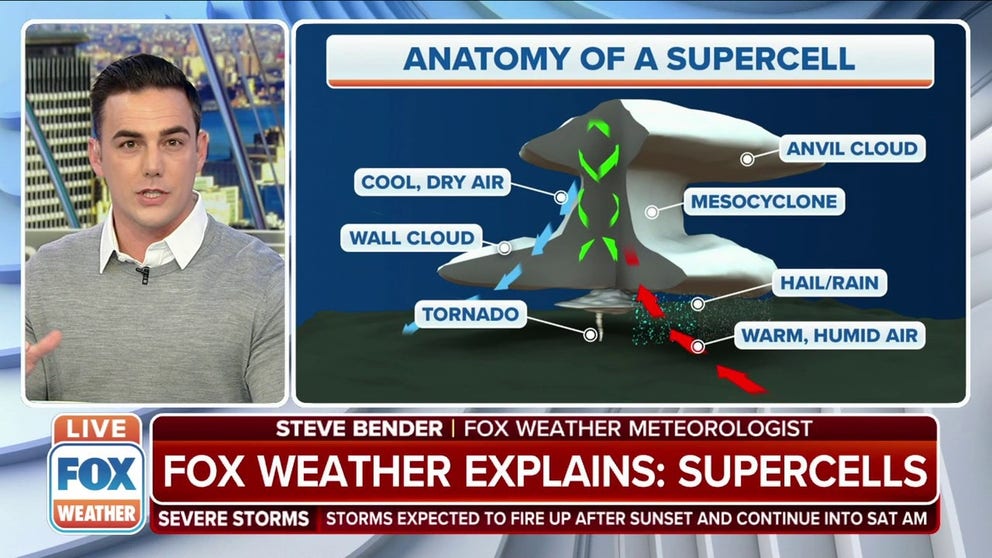What is a supercell thunderstorm?
Supercell thunderstorms, or supercells, are likely to produce severe weather such as powerful wind, large hail and tornadoes.
FOX Weather Explains: Supercells
FOX Weather meteorologist Steve Bender explains the anatomy of a supercell.
Supercell thunderstorms are the least common type of thunderstorm, but they are perhaps the most violent, according to the National Weather Service.
Of all the storm types, supercell thunderstorms, or supercells, are most likely to produce severe weather, such as powerful wind, large hail and weak-to-violent tornadoes.
Viewed from the ground, supercells take the shape of tall, anvil-shaped clouds.
US SEVERE THUNDERSTORM WARNING MAP
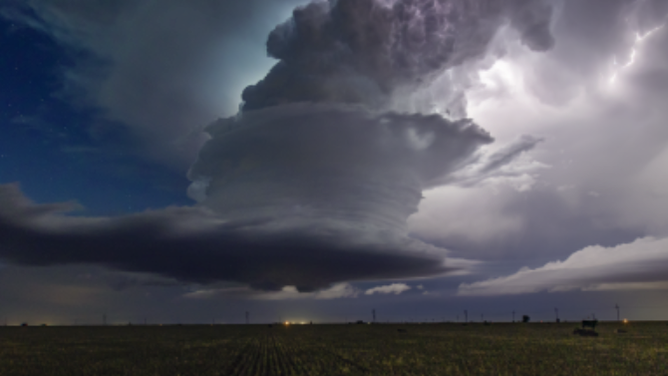
Supercell thunderstorm in Texas.
(Jason Weingart / FOX Weather)
The wide, top part of the "anvil" is stretched out like cotton by upper-level winds, while the bottom part of the anvil is stretched wide by low-level winds.
Inside the supercell, some of the low-level winds converge and curve, circulating and creating a rotating updraft of the supercell thunderstorm. Called the mesocyclone, this rotating updraft forms within the storm.
This mesocyclone pulls up warm, humid air from the ground and pushes down cool dry air, and it is what makes supercells unique from all other types of thunderstorms.
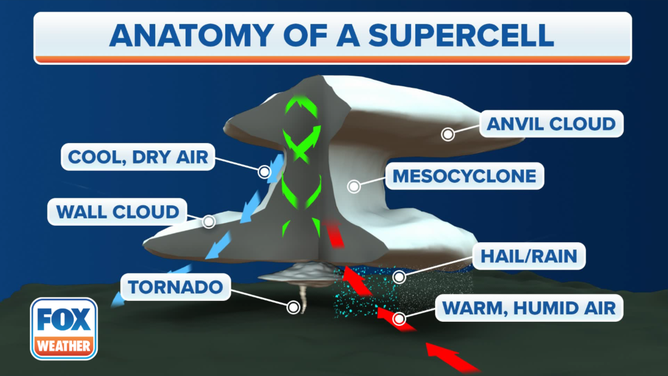
Anatomy of a Supercell
(FOX Forecast Center / FOX Weather)
According to NOAA, the mesocyclone also makes supercells dangerous because it allows the storm to fuel itself for an extended period, giving supercells more time to organize and become more severe.
One of the ingredients necessary to create a mesocyclone is also a primary ingredient for the formation of a supercell thunderstorm overall: wind shear. Wind shear involves changes in wind speed and/or direction with height, according to the FOX Forecast Center.
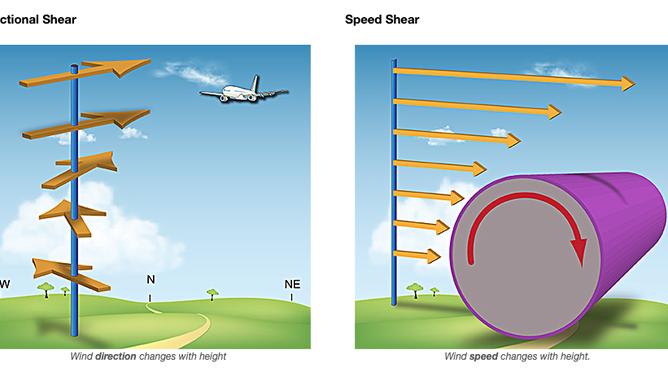
The two types of wind shear: directional and speed.
(National Weather Service / NOAA)
To create a supercell thunderstorm, there needs to be moderate-to-strong speed wind shear and directional wind shear in the atmosphere.
Stronger wind shear in the upper atmosphere helps to create a rolling effect in the atmosphere and is believed to be a key component in the formation of mesocyclones which can lead to tornadoes, according to the NWS.
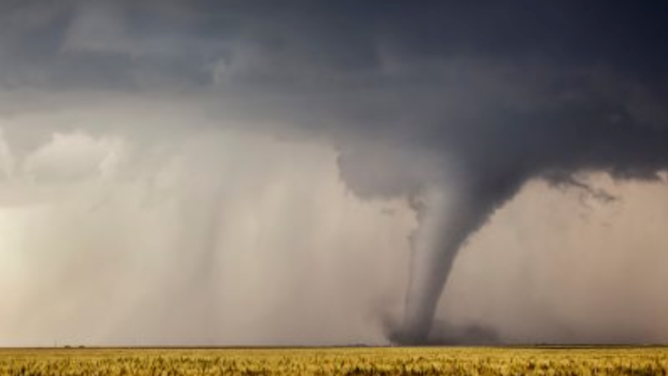
A stove pipe tornado cuts its way through a field in Minneola, Kansas, 24 May 2016.
(Jason Weingart / Future Publishing / Getty Images)
Combined with their ability to sustain themselves for an extended time, supercell thunderstorms may produce many tornadoes or strong, violent ones over several hours.
